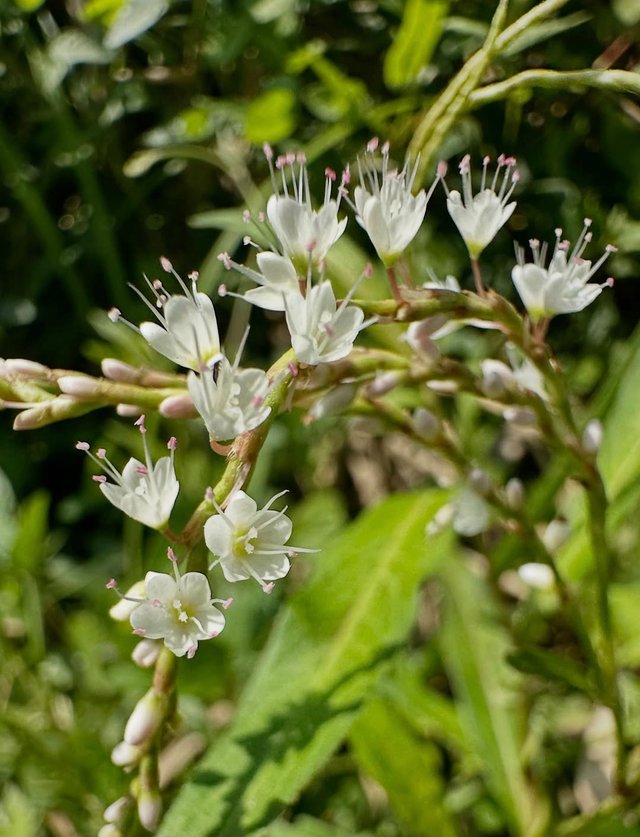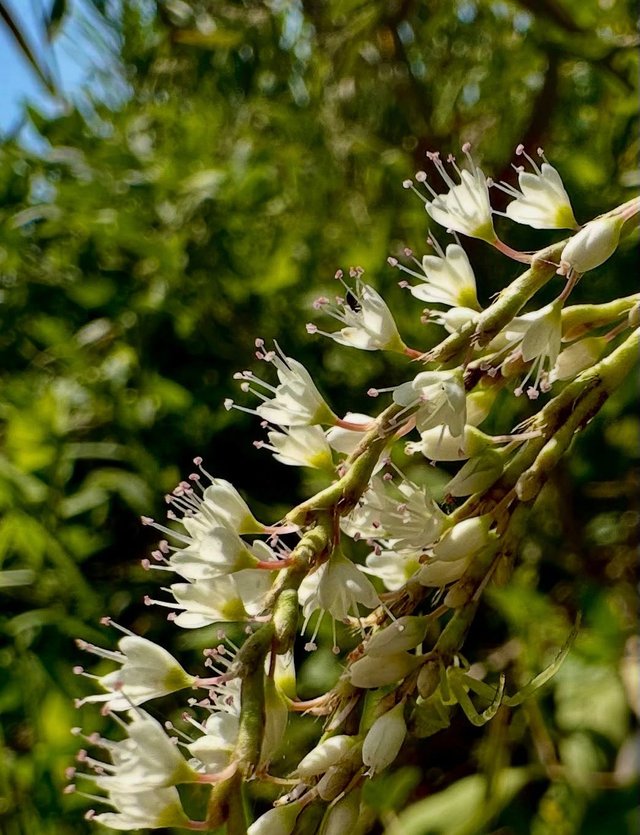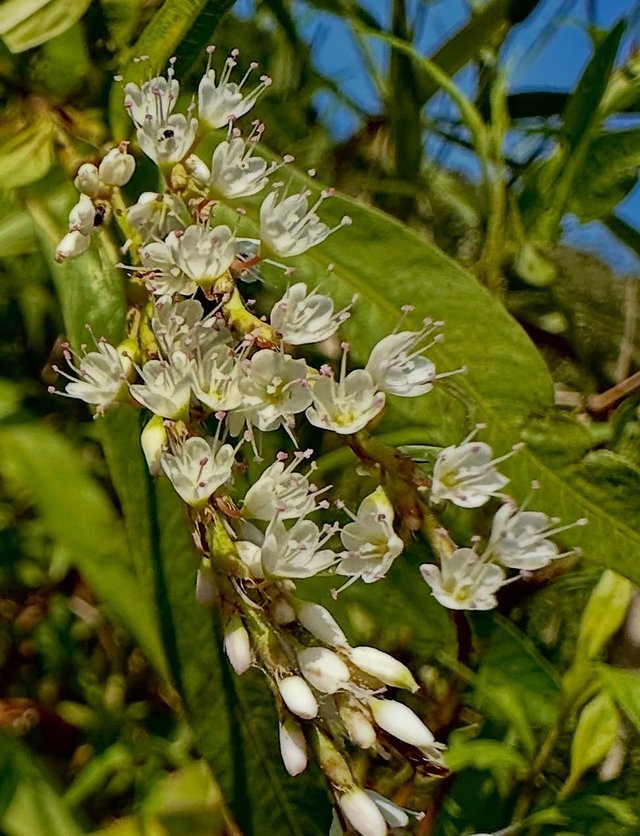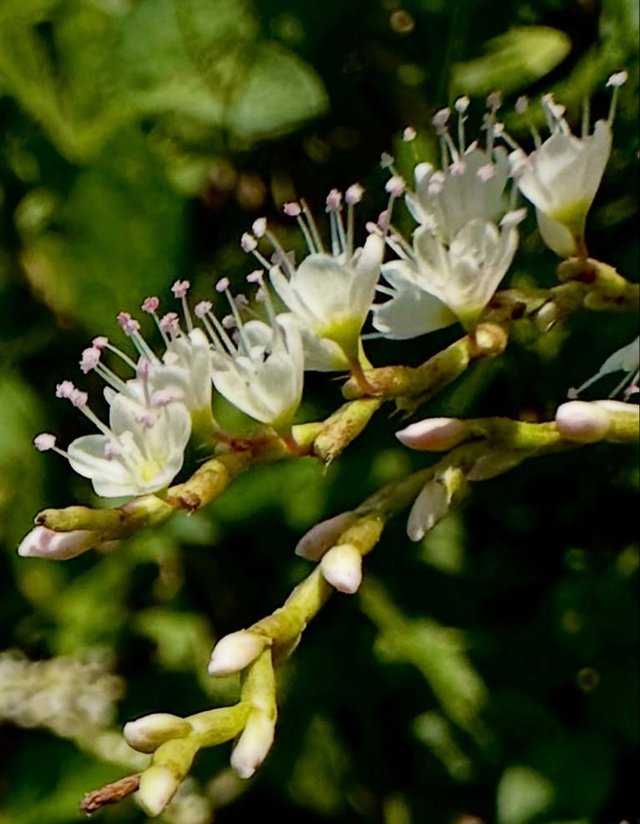Persicaria japonicum
Persicaria japonicum it is a vigorous and adaptable plant that typically grows in moist forested areas along riverbanks and mountain slopes thriving in environments with high humidity and fertile soil the plant is characterized by its upright stems which can reach heights of 60 to 120 centimeters and its broad ovate to heart-shaped leaves with a slightly wrinkled texture and prominent veins the foliage is lush green and sometimes develops reddish tinges along the margins or stems during the growing season Persicaria japonicum produces clusters of small delicate flowers.
That are usually white to pale pink blooming from late summer into autumn these flowers are borne on slender terminal spikes and while not particularly showy they add an airy elegance to the plant and attract pollinators such as bees and butterflies the plant spreads through rhizomes and seeds allowing it to colonize areas quickly and form dense stands in suitable habitats it prefers partially shaded conditions but can tolerate full sun if adequate moisture is available in horticulture Persicaria japonicum is sometimes grown as an ornamental for its bold foliage and adaptability.
And it is valued in naturalistic or woodland-style gardens where its leafy presence provides a lush backdrop in addition to its ornamental qualities the plant has traditional medicinal uses in East Asia it has been used in herbal remedies for treating digestive issues inflammation and skin conditions while its young leaves are edible when cooked and are sometimes used in regional cuisines as a leafy vegetable or in soups and stir fries ecologically Persicaria japonicum plays a role in stabilizing soil along riverbanks and slopes helping to prevent erosion with its extensive root system however in some areas outside.




